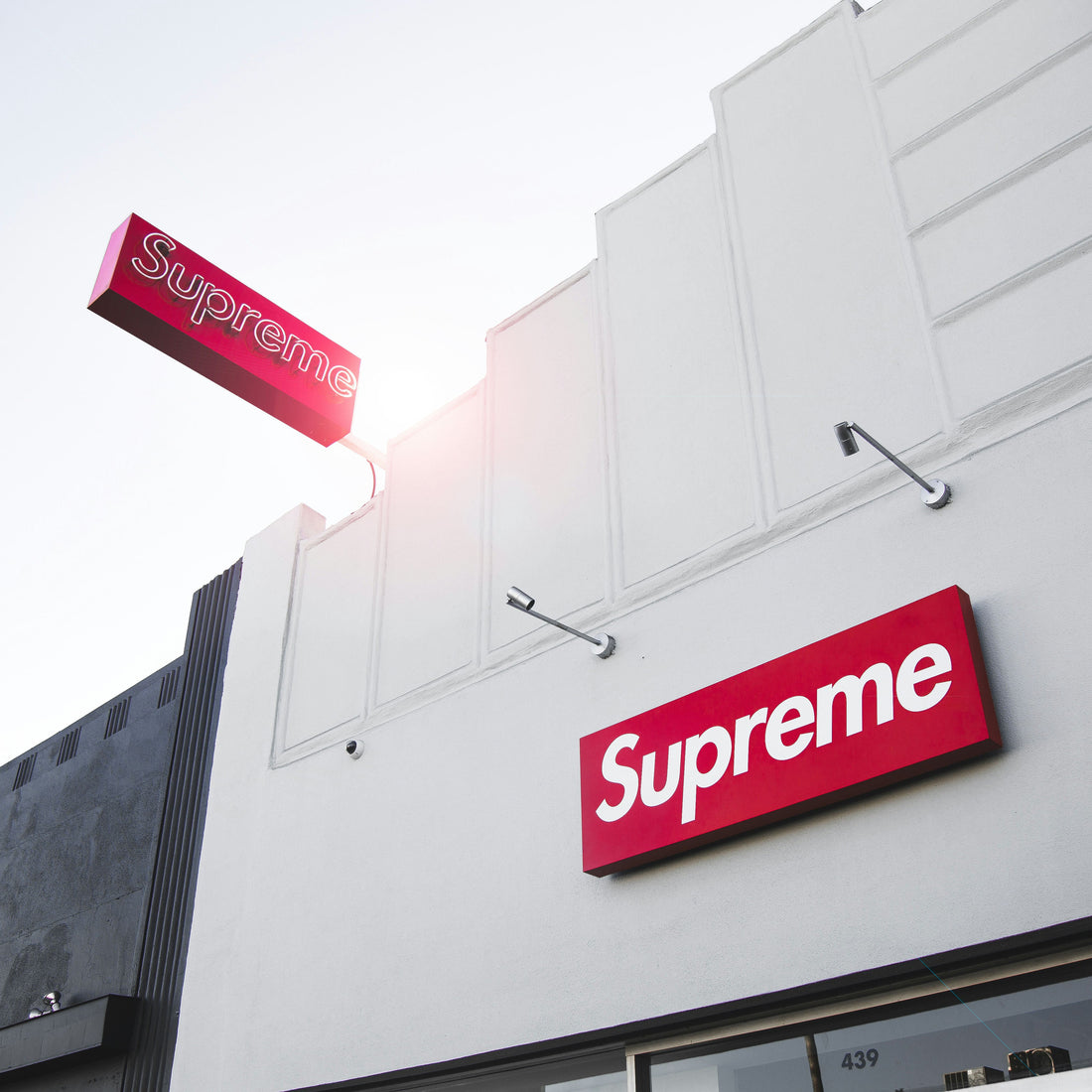
Supreme: the power of restraint
Share
Supreme didn’t try to be streetwear, it just was. Founded in 1994 on Lafayette Street in downtown Manhattan, it was built for skaters by skaters. The shop had no mirrors. The clothes weren’t styled to death. The energy was raw, direct, and unapologetically local. That honesty is what made Supreme hit differently.
From the beginning, Supreme made choices that felt counterintuitive to traditional retail, limited stock, low-key drops, and zero pandering. It didn’t explain itself, and that silence gave it weight. The red box logo, inspired by Barbara Kruger’s conceptual art, wasn’t just branding, it was a provocation. You either got it or you didn’t.
What made Supreme matter wasn’t just the gear, it was the culture it built around it. Skaters, graf writers, downtown kids, they weren’t just wearing the brand, they were shaping it. And Supreme let that happen. It collaborated with people who meant something to its community, from Jeff Koons to Nike SB, from Public Enemy to Comme des Garçons.
Scarcity wasn’t a strategy, it was just how they operated. That restraint, that sense of not trying to please everyone, is what created loyalty. Supreme didn’t follow trends. It backed its own taste and waited for others to catch on.
Even after global expansion and headline-making partnerships (like that Louis Vuitton collection), Supreme has managed to retain its edge. Some call it hype. Others see it as legacy. Either way, it’s a masterclass in cultural control: say less, do more, and always keep one foot in the street.
